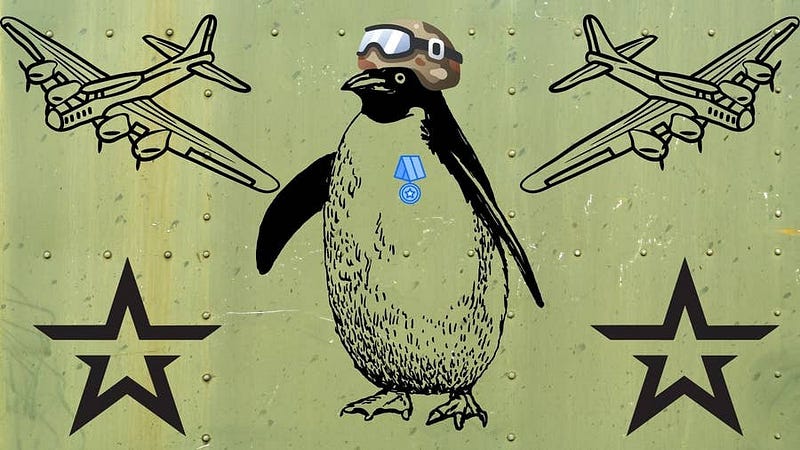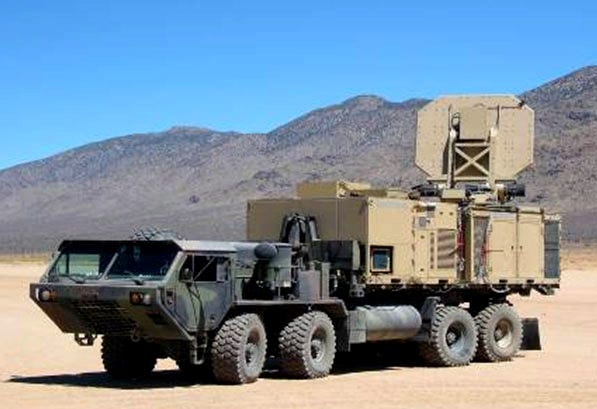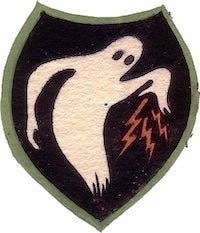Unbelievable Historical Military Facts
Some of the weirdest, funniest, and most incredible events from military history.

Humanity has fought wars for about as long as agriculture has existed, but when one thinks of war one might be tempted to think of words like “heroism” and imagine stylized battlefields lit by the explosion of shells, where brave soldiers vie in a desperate struggle for some strategically-vital piece of land.
What you probably do not think of is the penguin in charge of those soldiers or that when those soldiers call for support, it might come in the form of Pepsi’s navy.
Most people would certainly not think about the vital role that a bunch of art school majors played in the Allied victory in World War 2, and few would probably believe that the British military created an entire warship out of ice.
And yet, all of these are true pieces of military history, as strange and incredible as anything the most head-in-the-clouds writer could possibly create.
A Meteor Strikes A Roman Battlefield

In 74 BCE, during the height of the Third Mithridatic War, the Roman general Lucius Licinius Lucullus lead 32,000 soldiers against the vastly superior army of the Pontic King Mithridates in Phrygia. Though his enemy held the advantage of numbers, Lucius decided to press his attack regardless, hoping to keep the entire Pontic military effort on the defensive.
A heavenly display
With the soldiers arrayed in formation across from one another, battle seemed imminent… until the heavens seemed to split apart and a giant gout of flame shaped like a boar’s head and burning like silver in a forge seemed to fall between the two armies. Both sides were so terrified by the impressive sight that they retreated, the fight called until another day.
Rome would eventually prove victorious in its bid to defeat the Pontic Kingdom, ending over a decade of conflicts between the two powers that had begun with the Asiatic Vespers, the massacre of Roman settlers that had led to the First Mithridatic War.
Organic Weaponry

In WWII the need for weapons that were “smarter” and capable of hitting targets with greater accuracy grew in importance. While the Germans were pioneering early drone technology, the Allied forces were exploring all possible means of changing the nature of precision attacks. It was a psychologist, B.F. Skinner, who came up with the idea for a weapon guided by an organic component… a pigeon-guided missile.
Homing in on the ultimate weapon

B.F. Skinner wrote about the moment of revelation when he “suddenly saw [the pigeons] as ‘devices’ with excellent vision and extraordinary maneuverability.” Upon realizing how capable pigeons were, he conceived of bombs guided by the intelligent birds, who would be able to self-direct the weapon’s course to its target.
The kamikaze pigeon project showed extremely successful initial results, with the birds proving to be extremely capable of piloting a bomb to a target after being sufficiently trained to recognize the shape of elements like enemy battleships. However, despite its early signs of effectiveness, the military scrapped the project in the end, and Skinner’s pigeons were released from their service to their country.
Modified Super Soldiers

Experimentation with performance-enhancing compounds is not remotely new to military efforts throughout history. From the Nordic barbarian berserker warriors who likely ingested henbane in order to provoke bouts of bloodlust and immunity to pain, to the Nazi experiments during WW2 that saw soldiers outfitted with pills containing crystal meth.
A real super-soldier serum, a la Captain America

The true goal of performance-enhancing drugs, however, has always been something more: to not merely provide short bursts of exceptional ability, but permanently enhance a soldier’s capacity in all regards. That’s what the 2004 DARPA program “Metabolic Dominance” attempted to do, with the goal of enabling “superior physical and physiological performance by controlling energy metabolism on demand. An example is continuous peak physical performance and cognitive function for 3 to 5 days, 24 hours per day, without the need for calories.”
The program was eventually scrapped, but the search for effective means of promoting super-human qualities is far from over, and both DARPA and other agencies continue their exploration of the limits of the body and mind.
Nuke-by-Rail

Cold War hysterics were often blown to a fever pitch for propaganda purposes, but many military officials were deeply concerned about the risks of a first strike managing to wipe out the United States’ stationary nuclear silos. To combat this, and to provide an effective retort to Soviet mobile nuclear platforms, the military turned to the nation’s rail system.
The peacekeeper Rail Garrison
In 1986, President Ronald Reagan gave the go-ahead to create 50 special train cars, intended to look like ordinary cargo cars from the outside, that could travel the rail network in the event of war with the Soviet Union, and therefore remain safe from counterattack. This Peacekeeper Rail Garrison provided tight living conditions for a crew of maintenance personnel and security for up to a month.
Only a few years after the project was cleared, however, the Soviet Union disbanded and the Cold War officially came to an end. With the relaxation of tensions, combined with budget cuts to the increasingly outrageous military budget, the rail garrison idea was scrapped, with only a few of the prototype cars actually built.
The Great Emu War

In the wake of WWI, swaths of farmland were cleared in Australia for the production of wheat, but various problems and governmental inadequacies were making the lives of the farmers quite miserable. Not as miserable as they would soon be, however, when over 30,000 Emu descended on the farmlands, destroyed and ate the crops, and broke fences meant to defend against other types of pests. With the Emu, giant flightless birds that can run at speeds of up to 45 mph, destroying the already flaccid Australian wheat harvests, something clearly needed to be done.
A guerrilla war in the outback

Two detachments of Australian soldiers, under the command of Major G. P. W. Meredith, responded. Armed with two light machine guns and 10,000 rounds of ammunition, they set out in search of their quarry. The Emu, however, proved elusive. After a couple of failed small encounters, where only a handful of the birds were killed, Meredith proceeded south and encountered a larger group of over 1,000 birds. The machine gun jammed, however, and the great host of birds broke up before it could be fired again.
Afterward, the Emu appeared to become wise to the approach of the dangerous soldiers, with at least one bird remaining on the watch for their approach at all times, warning the others so that the flock could disperse before they arrived. Meredith’s first expedition retired, beaten and confused, after just one month.
Though later attempts by the military proved more effective in culling the herds of emus, it certainly never became the “target practice” success story that military officials had originally expected.
The Great Los Angeles Air Raid

Just following the attack on Pearl Harbor, nerves in the U.S. were frayed to a snapping point. Air defenses maintained constant readiness, and preparations were made for an impending incursion on the mainland, something that the United States had not faced in a very long time. It was in this air of extreme tension that the Battle for Los Angeles occurred, a moment in history that resulted in the deaths of five civilians.
Japanese submarine planes, balloons, or alien invaders?
In the wee hours between 24 February and 25 February 1942, the 37th Coast Artillery Brigade opened fire after mystery aircraft were reported in the sky. With the threat of at least 25 potential aircraft incoming, blackouts were ordered, and the 37th initiated a furious skyward bombardment with 50 caliber machine guns and over 1,400 12.8 pound anti-aircraft shells.
Unfortunately for the 37th, not a single enemy aircraft was downed — and none appeared to have been present at all. The later historical review suggested the presence of weather balloons was the cause, though conspiracy theories abound to this day. The civilians who died were either killed by wild munitions or suffered from severe heart attacks brought on by the extreme nature of the shelling.
The Heat Ray

It may sound a bit like science fiction, but the U.S. military actually has fully operational “heat rays” straight out of Flash Gordon classics. The weapon’s official name is the Active Denial System, and it works by firing a beam of millimeter-wavelength energy at the target. This energy excites the surface of the skin and makes it feel exceptionally hot, but has very few side effects, making it potentially powerful as a nonlethal weapon for military or police use.
Interest in the ADS is heating up

The Los Angeles Police Department began using the ADS at the Pitchess Detention Center in 2010 as a form of crowd control and, in 2020, federal officials apparently asked the National Guard to deploy the heat ray against protesters outside the White House. The National Guard, however, explained that they had none of the weapons readily available.
The current generation of ADS is a mounted weapon, but plans are moving forward to miniaturize the technology and make it viable for use as an alternative to small arms when dealing with crowd control, or in situations where collateral damage needs to be avoided.
The Unlikely Colonel-in-Chief of the Norwegian King’s Guard

The Norwegian King’s Guard has two vital responsibilities: as bodyguards for the royal residencies in Oslo, and as the main infantry unit responsible for the defense of Oslo. As such, one would expect that the leadership of the King’s Guard be awarded to the best, the brightest, the most incredible specimens of military prowess that the country has to offer. One probably would not expect that the guard’s colonel-in-chief would, in fact, be a King Penguin.
An honorable heritage

Brigadier Sir Nils Olav III has served as colonel-in-chief of the King’s Guard since his appointment in 2005. He received his promotion to brigadier in 2016. In 2008, where a letter from the King of Norway declared that Nils “in every way qualified to receive the honor and dignity of knighthood”.
When Pepsi Disarmed the USSR

In 1959, a famous “kitchen exhibition” took place between the USSR and the United States, the goal of which was to offer a chance for the populations of both countries to see how the other lived. For American corporations, this offered the chance for something more: an entryway into the Soviet market and access to millions of potential new customers.
The night before the exhibition ended, Pepsi executive Donald M. Kendell asked President Richard Nixon to offer a sip of Pepsi to Chairman Nikita Khrushchev. When Khrushchev tasted the drink, he fell in love with it, and not long afterward, Pepsi signed an exclusive deal with the USSR to ship their drink to the country. The only catch was that Pepsi couldn’t accept Soviet currency, so they exchanged Pepsi for vodka instead in what was one of the largest modern barter-based trades in history. That, however, is only the tip of the iceberg.
Pepsi temporarily became the world’s sixth-largest military force.

In 1980, the United States boycotted Soviet products, including vodka, and the Pepsi deal collapsed. But all was not lost. Nine years later, with the Soviet Union in decline, a new deal was struck. Pepsi would act as the middleman for the sale of outdated Soviet military technology… namely 17 submarines, a cruiser, a frigate, and a destroyer.
Pepsi would go on to make a large sum from the sale of this equipment, and the joke of the time was that the soda company was doing a better job of disarming the USSR than the United States political machine.
The Prussian Giant Guard of Postdam

History is rife with mythic tales of giants, but only once is there a recorded military force comprised of nothing but actual giants. Known as the Lange Kerle, or “Long Fellows”, these soldiers formed the Prussian infantry regiment No 6, at the special command of King Frederick William I of Prussia.
The Potsdam giants

With a minimum height requirement of 6’2’’, even the shortest of the regiment were taller than the average man of the era (or modern times), and many were much taller, with some reaching at least seven and a half feet.
The King had a fascination with the soldiers, once admitting to a French ambassador that “the most beautiful girl or woman in the world would be a matter of indifference to me, but tall soldiers — they are my weakness”. He went so far in his pursuit of finding exceptionally tall men for his regiment that he would have tall men forcibly recruited, an act that led to suicides and desertions. He also embarked on one of the first recorded attempts at State eugenic experimentation, by forcing his tall soldiers to interbreed with tall women, to produce exceptionally tall offspring.
Somewhat ironically, due to the rampant giganticism and other health defects of many of these soldiers were likely unfit for military service. When the King’s son succeeded his father, he disbanded the special regiment and the era of the Long Fellows came to an end.
The Soviet Men Who Saved the World

The Cold War was arguably one of the most dangerous periods in history for the human species, and for all life on the planet. Given the prevalence of weaponized nuclear technology and with both the United States and the USSR consistently jockeying for political and military power, the threat of massive nuclear annihilation overshadowed the lives of people around the world for four decades and has left an indelible mark on the psychology of both societies.
But, for all the dangerous moments of the Cold War, there were two that stand head and shoulders above the rest, both as moments when the risk of nuclear war was only minutes away, and when the actions of a single man held that war at bay.
Vasily Arkhipov

When the United States Navy illegally dropped depth charges in international waters during the Cuban Missile Crisis, they had no way of knowing that their quarry had access to far bigger guns. Equipped with nuclear torpedoes and unsure, because of a lack of contact with his command, if a war between the US and the USSR had broken out, the Captain of the B-59 submarine decided to fire back at the attacking US ships. Luckily for the whole world, doing so required the agreement of both the political officer and, in this one case, a man named Vasily Arkhipov, who just so happened to be the commodore of the entire submarine flotilla. Unwilling to risk war, Arkhipov held his ground, and nuclear war was averted with just minutes to spare.
Stanislav Petrov

A graduate of the Kiev Higher Engineering Radio-Technical College who later joined the military, Stanislav Petrov saved the world in 1983 when he held back information (against standing orders) from his superiors regarding six incoming ballistic missiles detected by the Soviet Union’s new missile detection system.
The missiles were later proved to have been a glitch in the detection network, and Petrov’s instincts were proved right. He later credited his civilian experience with his decision, saying that if any of his career military peers had been in the same position, they would have passed the information on as their orders told them to do. War would likely have been the result, since the Soviet military leaders were primed during that extremely tense period for the potential of a first strike scenario, and would have almost certainly not been willing to risk their retaliatory ability becoming compromised.
The Cavalry that Captured a Naval Fleet

Just three years into the French Revolutionary War, in 1795, with Amsterdam occupied by French forces, things looked bad for the Dutch Republic. A Dutch fleet, however, lay in wait some eight kilometers north of Amsterdam, at a place called Den Helder, prepared to sweep down and lie low the French forces. But winter was coming, and a daring plan by the French General sent to deal with the fleet resulted in one of the rarest events in military history: the capture of a naval fleet by mounted cavalry.
A slippery plan

The French cavalry and supporting infantry arrived at Den Helder and the shores of Zuiderzee Bay, where the Dutch fleet was anchored in the middle of winter. The ships sheltering in the bay seemed abnormally calm and still. This was because they were frozen solid in ice. The French forces covered their horses’ hooves in cloth and with two men to a horse (one cavalry soldier and one infantry), they crossed the ice, scampered onto the ships, and managed an entirely bloodless capture of the entire fleet, totaling 14 warships and 850 guns.
When Art Students and Advertisers Helped Win WWII

After the Allied Invasion of Normandy, heavy resistance by Nazi forces made the push inland incredibly dangerous. The Allies recognized the need to find some means of misdirecting Nazi attention away from their troop movements and encamped positions, as well as to plug holes in the Allied lines that could be exploited to slow the advance.
All the world’s a stage

Enter the 23rd Headquarters Special Troops, also known as the Ghost Army, a collection of just 1,100 men, mostly pulled from art schools and advertising agencies, who, combined with the advanced technology of the day (like precursors to tape recorders), pretended to be a 30,000-strong force operating on the front lines of the conflict. Utilizing a massive array of props (including inflatable tanks), scripts, sound effects, and tricks befitting the best stage magicians, they misdirected enemy attention away from the real Allied advance, keeping the Allied soldiers safe and the Nazi forces continually off-balance.
The 101-year War Between Montenegro and Japan

Between 1904 and 1905, Russia and Japan were at war. Volunteers from Montenegro were encouraged to fight alongside the Russian Army in Manchuria. For the next 100 years, Montenegro and Japan would remain locked in a state of war… well, technically.
A world of technicalities
Actually, the conflict between the two countries existed only on paper. Montenegro was not mentioned in the peace treaty between Russian and Japan, leading to the unfortunate technicality that the two States remained at war for a century. When, in 2006, Montenegro left its union with Serbia to become its own State, Japan joined other major countries in recognizing it as an independent nation and officially declared the war at an end.
That Time in 2002 When Britain Invaded Spain

Spain and Britain may be NATO allies, but that hasn’t stopped them from having a long-running political dispute regarding the sovereignty of Gibraltar, which has been a British Overseas Territory since 1713. But history was rekindled in 2002 when a 20-strong invasion force landed nearby on Spanish soil.
A rocky misunderstanding

In 2002, 20 Royal Marines beat a hasty retreat in the face of superior Spanish police power (in the form of two Sunday police officers) in charge of crowd control for the Sunday boardwalk in the resort town of La Linea. Due to bad weather and a map reading problem the night before, the Marines had gone off course and landed on the Spanish beach, charging forth from their two landing boats before realizing their mistake and, red-faced, beating a hasty retreat. The mayor of La Linea, Juan Carlos Juarez, jokingly said later on that “we managed to hold them on the beach.”
Project Habakkuk

During the Second World War, the need for the ability to send military aircraft into the mid-Atlantic to hunt for U-boats grew as the German’s lethal underwater weapons’ proved a consistent and growing danger to Allied forces. Aircraft technology of the era could not sustain flights that far, so the need for some sort of aircraft carrier seemed clear. The only question was how. The resources needed to build a huge aircraft carrier were in short supply and needed elsewhere. Then inspiration struck: what if the British navy were to use ice?
Wood pulp and frozen water

The Project Habakkuk focused on building a ship out of a substance called Pykrete, a combination of wood pulp and ice that is extremely durable and resists melting due to the way the wood pulp insulates the interior ice. Bullets fired at a slab of Pykrete were even seen to rebound, wildly zipping around the test room. Even more important: more Pykrete could be created using seawater, allowing for extensive repairs while at sea.
Project Habakkuk came to an end when new landing zones and better fuel tank technology rendered the need for a long-range aircraft carrier obsolete, but the gigantic prototype carrier that was built in Canada still took three hot summers to melt, proving that the Pykrete technology had merit in the end.
Hi there! I’m Odin Halvorson, a librarian, independent scholar, film fanatic, fiction author, and tech enthusiast. If you like my work and want to support me, please consider subscribing!
